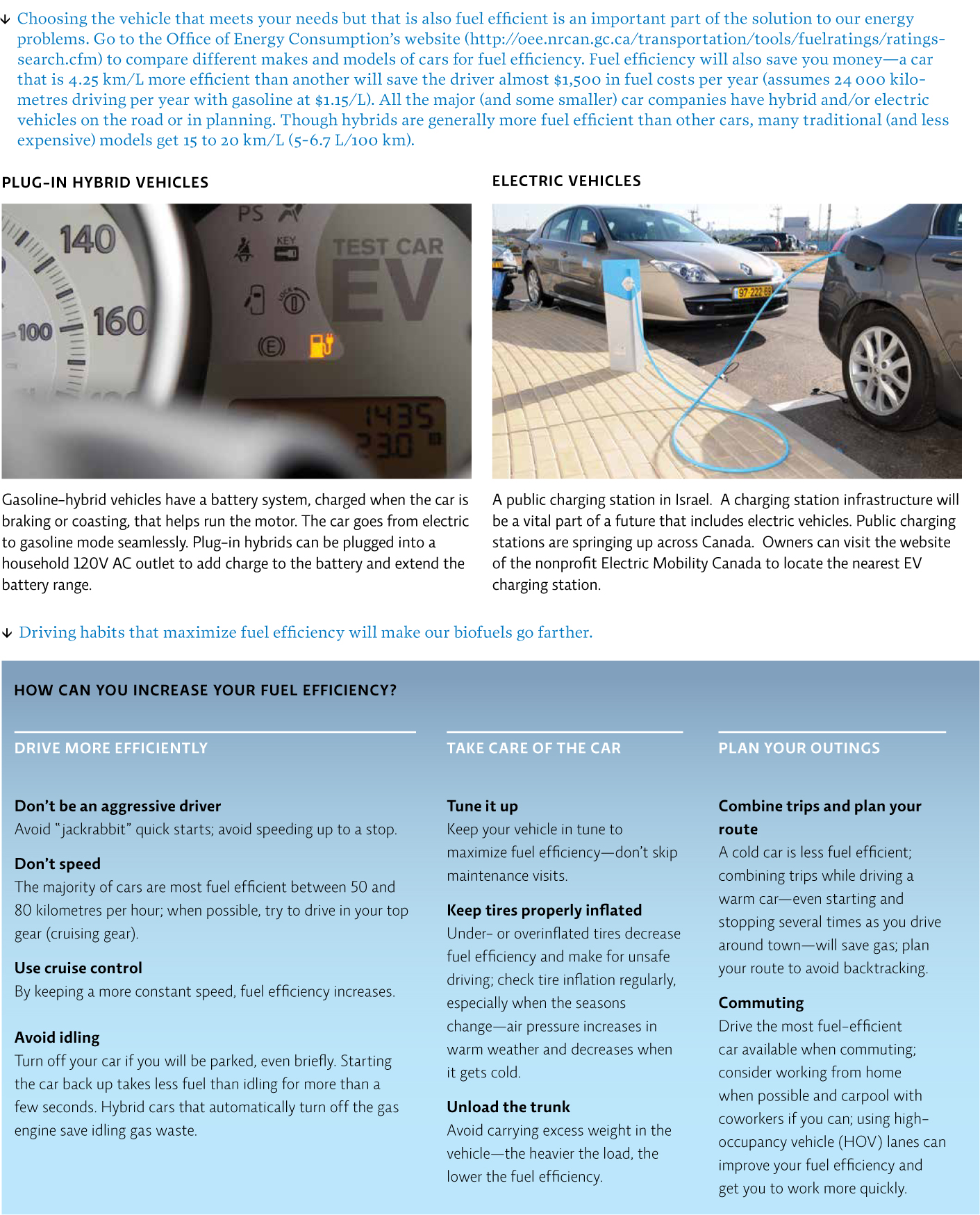25.8 Multiple solutions will be needed to help replace fossil fuels.
Like all strategies to replace fossil fuels, biofuels will never have just one golden ticket winner. Instead, a patchwork of feedstocks grown and processed across the United States and Canada will help provide our countries’ fuel. The good news is that we have a wide variety of options, which enables us to focus on the types of biofuels that work best for different needs or in different regions.
Whatever the future, one thing is sure—to be truly environmentally friendly, we may simply have to stop using so much fuel. This means increasing energy efficiency to decrease waste, and basic conservation—simply using less. The energy efficiency of vehicles can be improved with lighter materials, more aerodynamic shapes, more energy-efficient engines, and hybrid technologies that pair electric motors with internal combustion engines. Totally electric vehicles would lessen the demand for liquid fuels. Drivers can also increase the fuel efficiency of whatever vehicle they drive by adopting better driving habits and of course, by driving less overall. [infographic 25.7]

In 2007, the U.S. Congress passed the Energy Independence and Security Act, which requires the United States to produce 36 billion gallons (135 billion litres) of renewable and alternative fuels per year by 2022 (up from 11 billion gallons [41 billion litres] produced in 2009)—equivalent to about one-quarter of the entire country’s yearly use of gasoline.
The United States is behind schedule—the economic downturn and obstacles to scaling up cellulosic ethanol have stalled progress in recent years. The goal for 2010 was 250 million gallons (945 million litres) of cellulosic ethanol; that year, the United States produced only 25 million gallons (94.5 million litres)—off by a factor of 10. Uncertainties about whether tax credits and subsidies will remain available make cellulosic ethanol a risky investment, and many venture capitalists have pulled out of projects. In Canada, many projects have been put on hold or slowed considerably due to similar delays in policy and incentive development.
And yet, biofuel projects are moving ahead. Many U.S. states offer rebates or tax exemptions on fuels for commercial vehicles that operate on biodiesel blends or E-85 fuels, and financial incentives like tax credits or grants are offered to biodiesel producers or distributors. In August of 2011, the U.S. federal government launched a $510 million program, in the form of matching funds, to help finance biofuel projects directed toward military transportation applications.
468
469
Biofuels are also growing in popularity around the world. Brazil, a world leader in ethanol biofuel, has no light vehicles that run on 100% gasoline, and Brazilian car manufactures have developed vehicles that run on ethanol blends or 100% ethanol. China and India have national policies mandating the increase of the ethanol component of gasoline. In addition, China, India, and other developing countries are supporting biodiesel production from locally grown crops such as the succulent plant jatropha. Meanwhile, China is pursuing the development of technologies to produce biofuels from municipal garbage. Smaller-scale programs are also underway in many nations around the world.